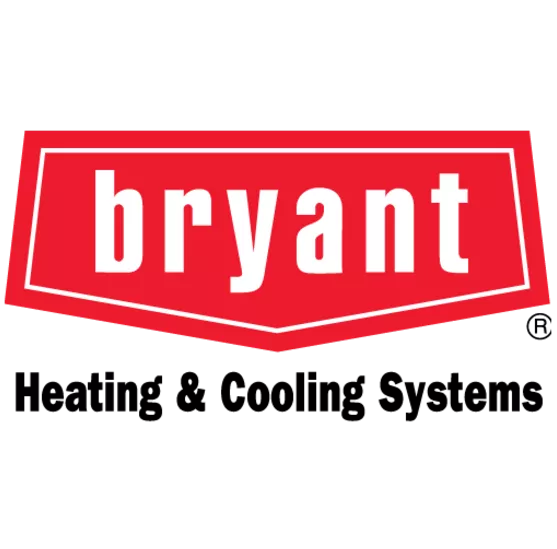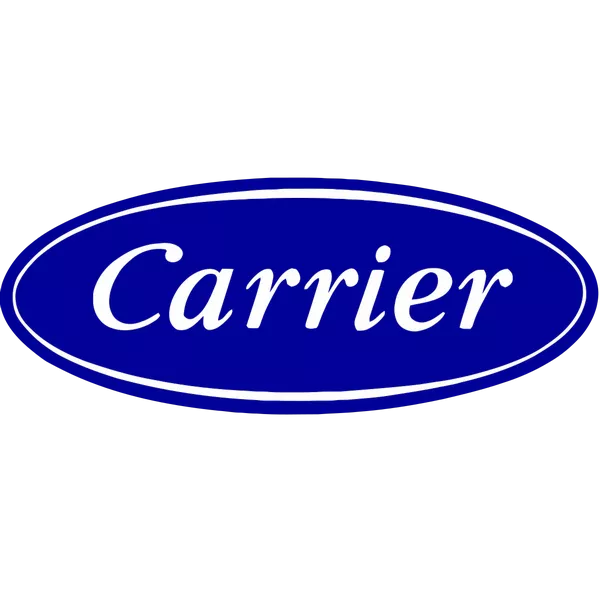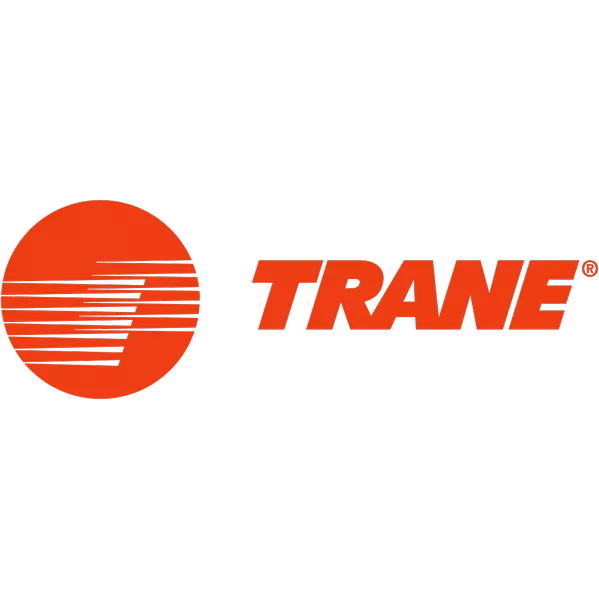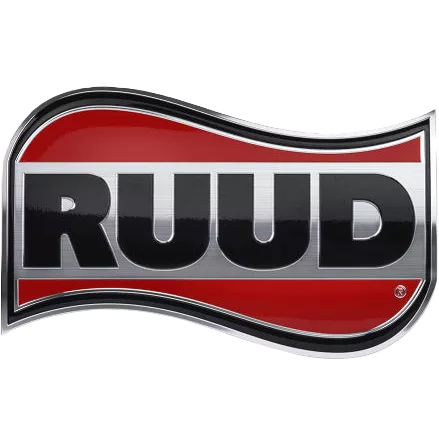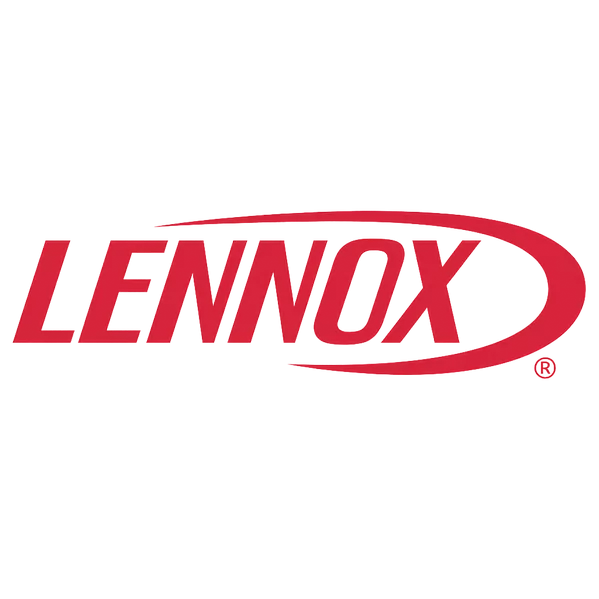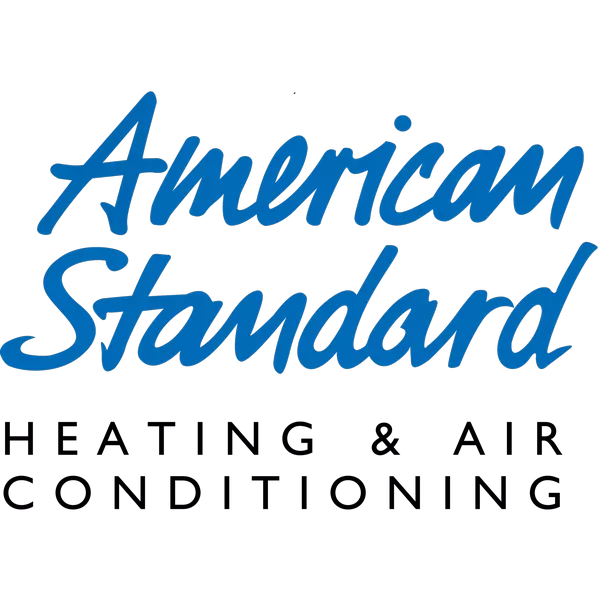Carrier: Founded in 1902 by the inventor of modern air conditioning, this brand couples a long history of awards with a deliberately simple lineup that helps households move from basic comfort to premium, variable-capacity control without getting lost. Years of field refinement show up in quiet condensers, ultra-efficient furnaces, and a dealer base trained on communicating controls and diagnostics. For this comparison the spotlight is the Infinity 26 variable-speed central AC, Infinity 98 modulating gas furnace, and Infinity 24 variable-speed heat pump, and everything below will be judged on how these perform together as a matched set.
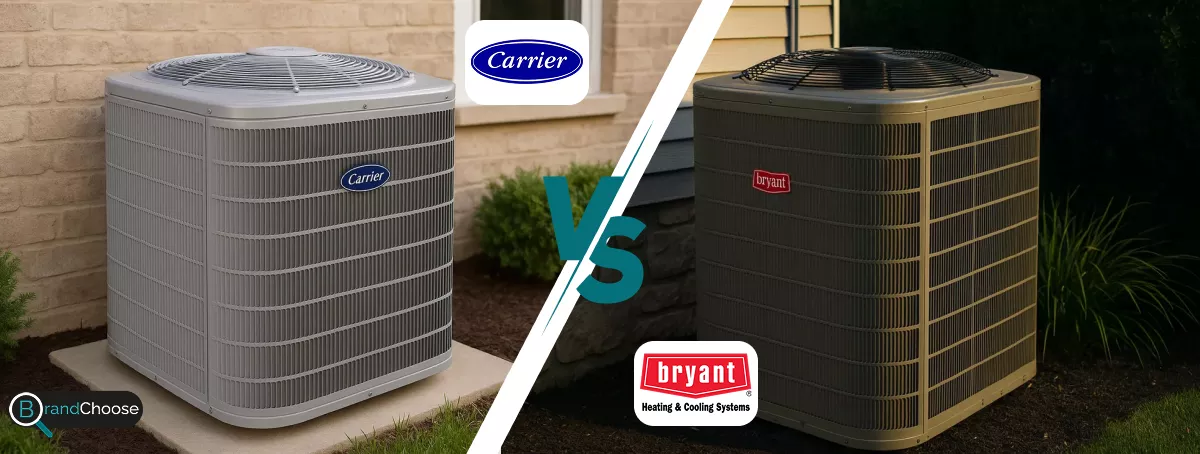
Bryant: With roots in early-century heating and decades of comfort products, this brand built a reputation for approachable performance in the Evolution flagship tier while keeping sensible step-downs for mid-range and entry budgets. The product playbook favors strong humidity control, polished communicating controls, and a dealer network familiar with variable-capacity commissioning. Here the focus is Evolution 191VAN variable-speed central AC, Evolution 987M modulating gas furnace, and Evolution 288BNV variable-speed heat pump, and the judgments below reflect how that trio behaves as a coordinated system.
Product Selection
| Primary Use Case | Carrier | Bryant | ||
| Air Conditioner | Infinity 26 | 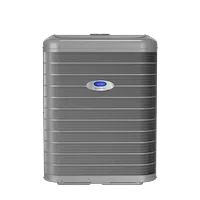 |
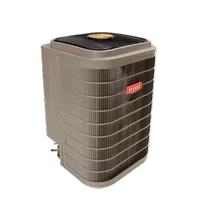 |
191VAN |
| Gas Furnace | Infinity 98 | 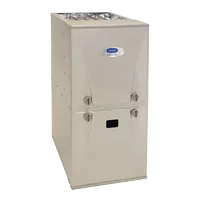 |
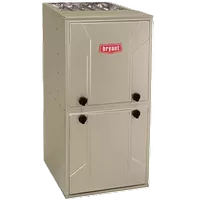 |
987M |
| Heat Pump | Infinity 24 | 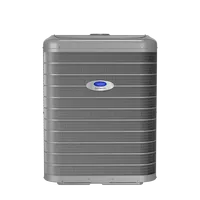 |
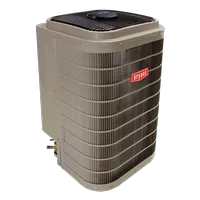 |
288BNV |
🟦 Carrier: The tiering is intentionally simple, Infinity at the top, then Performance and Comfort, which matters when a buyer is stuck between “good enough” and “buy it once and forget about it.” For this review, the chosen stack is Infinity 26 + Infinity 98 + Infinity 24 HP, a combination frequently seen in successful 3-ton retrofits where tighter humidity and smooth temperature ramps were the brief. Published matched-system pairings (outdoor unit + indoor coil or furnace + communicating control) act like a tested recipe that preserves efficiency and features across tonnages, which turns later upgrades like zoning or advanced IAQ into straightforward add-ons instead of compatibility puzzles. That clarity shortens the distance from research to a specification that actually fits a home.
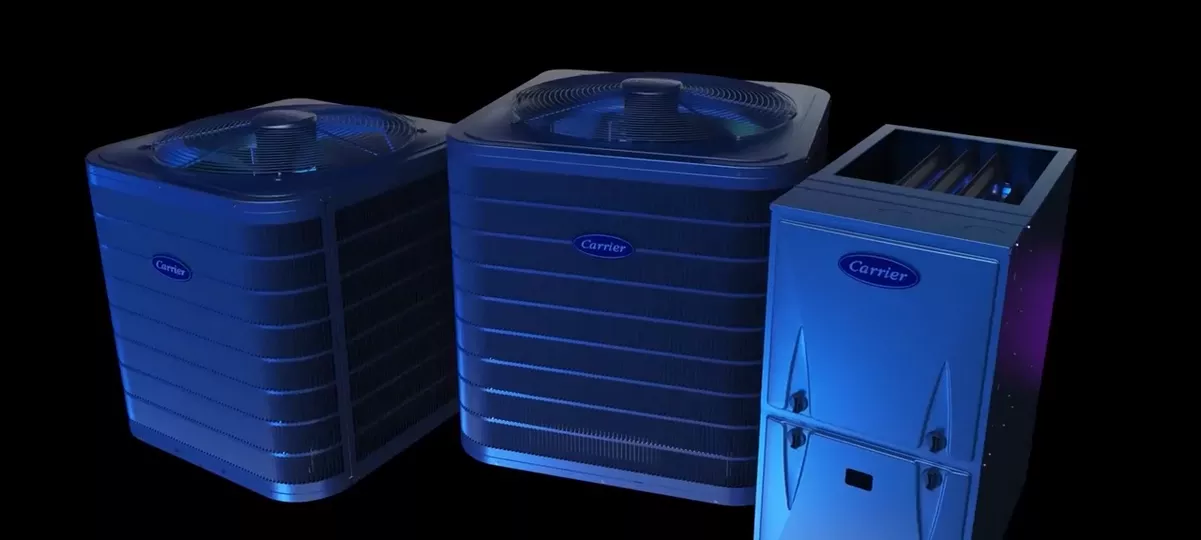
🟪 Bryant: The catalog follows a similar, shopper-friendly path; Evolution at the top, then Preferred and Legacy; so stepping up or down in efficiency, sound, and features remains intuitive. The 191VAN + 987M + 288BNV grouping is a common premium pick in 2 to 4-ton homes where ducts are imperfect but comfort expectations are high, and it scales cleanly across sizes with air handlers and coils that keep ratings intact. The brand’s documentation for “matched sets” gives dealers the combinations that maintain features like variable capacity and staged airflow, which reduces the chance of mismatched parts in the field. For households, the result is a ladder of options that feels linear rather than labyrinthine.
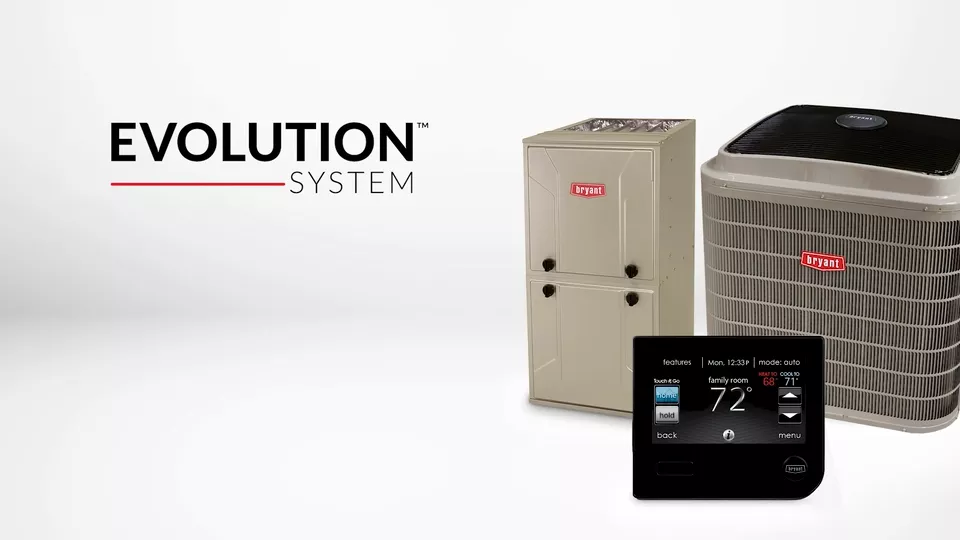
✅ Verdict: Carrier (Infinity/Performance/Comfort) organizes tiers clearly and is easy for homeowners to navigate, while Bryant (Evolution/Preferred/Legacy) gives dealers flexible like-for-like options to tailor capacity and coils to budget.
Customer Support & Warranty
🟦 Carrier: Registration yields 10-year parts on premium equipment and strong furnace heat-exchanger terms, with service quality closely tied to a dealer base trained on communicating setups. Where the network is dense, parts flow quickly and diagnostic logs shorten visits; where it is thinner, outcomes hinge more on contractor fluency with variable-speed commissioning and control configuration. Keeping the communicating thermostat in place preserves the service playbook and avoids feature loss during replacements.
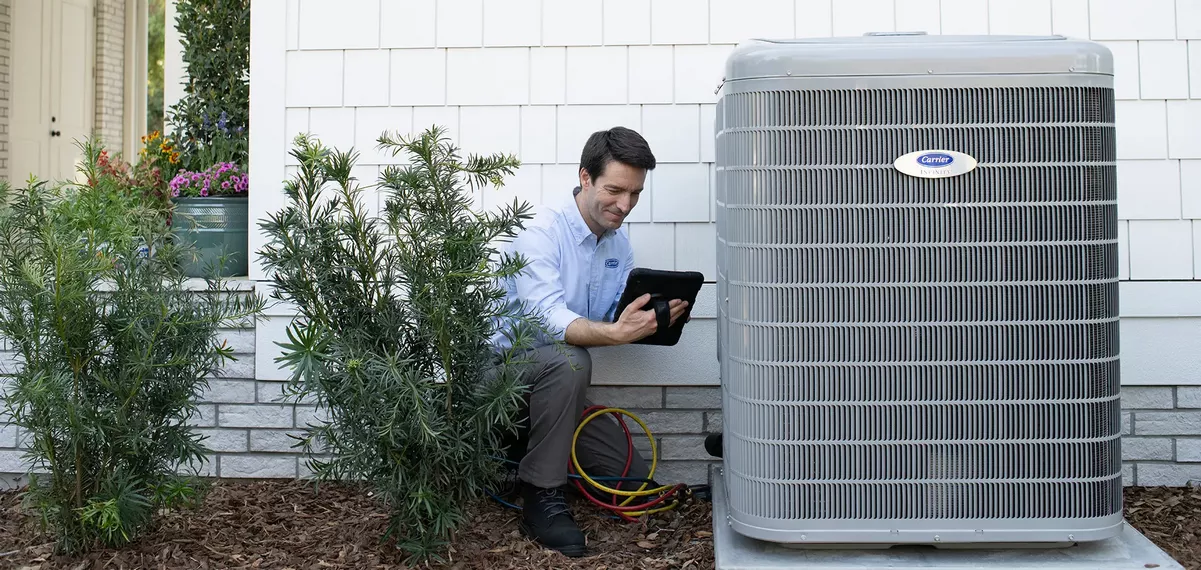
🟪 Bryant: Registration likewise brings 10-year parts on the flagship tier and robust heat-exchanger coverage, and dealers are well versed in communicating controls and variable-capacity commissioning. Support experiences are generally smooth, but network density is more regional, so speed can vary by market. Documentation and parts pathways are solid, and matched-set guidance helps keep warrantyable features intact after service events.

✅ Verdict: Carrier benefits from a broad national footprint and consistent claim handling in dense markets, while Bryant pairs the same policies with many responsive independents who can move quickly on parts and scheduling.
Energy Efficiency
🟦 Carrier: The flagship AC posts premium SEER2 results (SEER2 is seasonal cooling efficiency under the current test), the modulating furnace sits in ultra-high AFUE territory (AFUE is gas fuel-to-heat efficiency), and the variable-speed heat pump delivers high-tier SEER2/HSPF2 numbers (HSPF2 is seasonal heating efficiency for heat pumps). The practical win is partial-load behavior: an inverter compressor (variable-speed drive that modulates capacity smoothly) and ECM blower (electronically commutated motor that adjusts airflow precisely) run long, low-power cycles that hold temperature and indoor humidity steady while trimming on/off losses. On clean change-outs from 12-14 SEER legacy gear, 20-30 percent seasonal savings are common when ducts are sealed and refrigerant charge is set with digital tools.
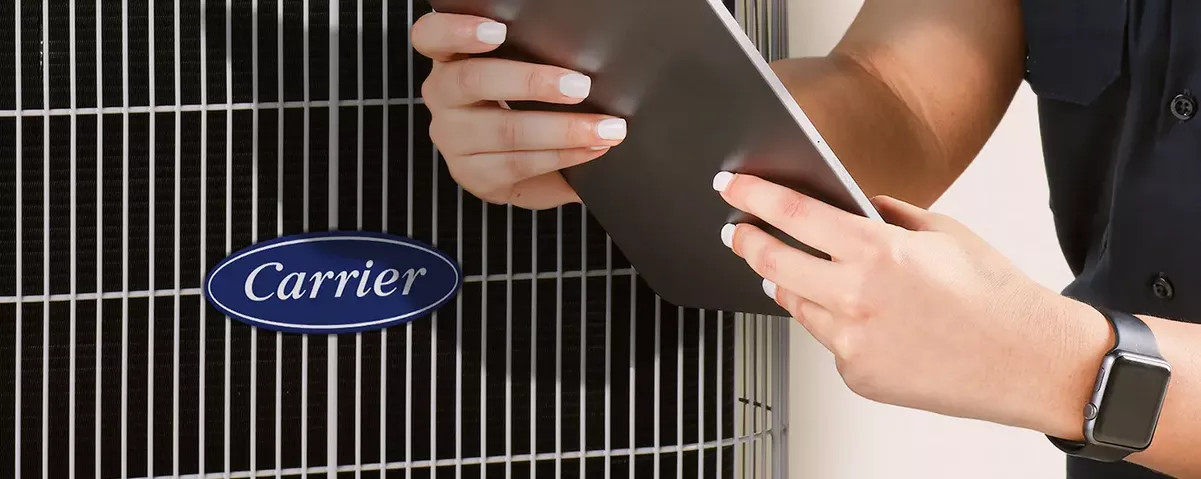
🟪 Bryant: The Evolution AC sits in the high-teens to low-20s SEER2 bracket, the modulating furnace reaches ultra-high AFUE as well, and the variable-speed heat pump lands in upper-tier SEER2/HSPF2 ranges. Field results mirror the premium pattern: extended, low-power cycles increase moisture removal without overcooling, and communicating controls keep airflow and coil temperature aligned to the load so efficiency does not evaporate in shoulder seasons. With right-sized equipment, sealed ducts, and proper CFM-per-ton targets, double-digit percentage bill reductions are a realistic expectation.
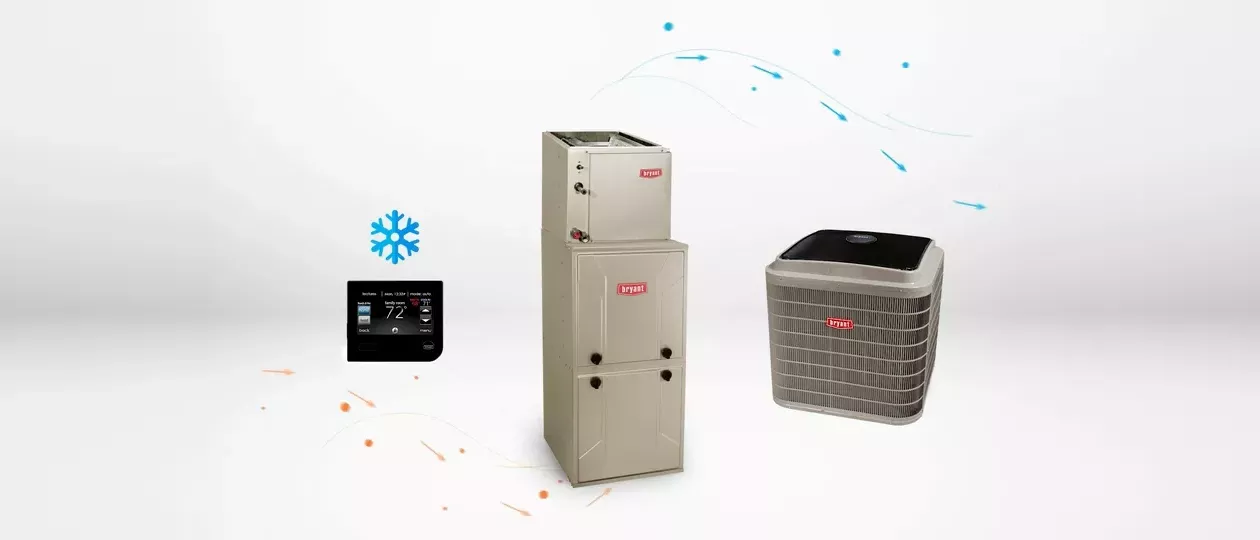
✅ Verdict: Carrier flagship variable-speed systems often top the spec sheets and make rebate chasing straightforward, while Bryant matches those ratings in twin models and can deliver similar savings at a slightly friendlier quote in many areas.
Smart Features & Connectivity
🟦 Carrier: The Infinity System Control is a communicating thermostat (control that exchanges live data with equipment to modulate intelligently) that coordinates compressor speed, blower cfm, and coil temperature to hit comfort targets rather than simply toggling. Zoning, dehumidify-on-demand, schedules, and IAQ modules live under one umbrella, and event logs accelerate service by pointing techs to root causes. Third-party thermostats can operate the system, but staying within the ecosystem preserves deeper features like staged airflow during humidity pulls and optimized balance-point logic for dual-fuel.
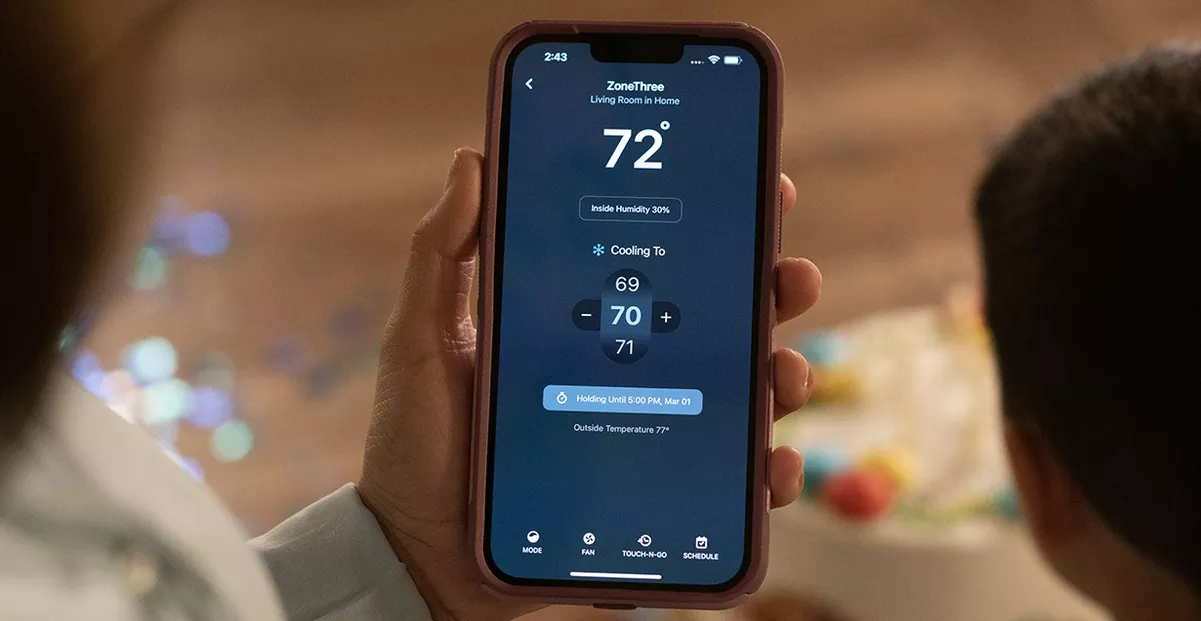
🟪 Bryant: The Evolution Connex control is likewise a communicating platform that manages variable capacity, zoning, humidity setpoints, and scheduling while surfacing diagnostic histories a dealer can use to shorten truck time. Interface design is clean, the app experience is stable, and the control logic favors smooth ramps that keep rooms from overshooting temperature. IAQ add-ons integrate neatly, and the system behaves as a coherent whole rather than a pile of accessories.
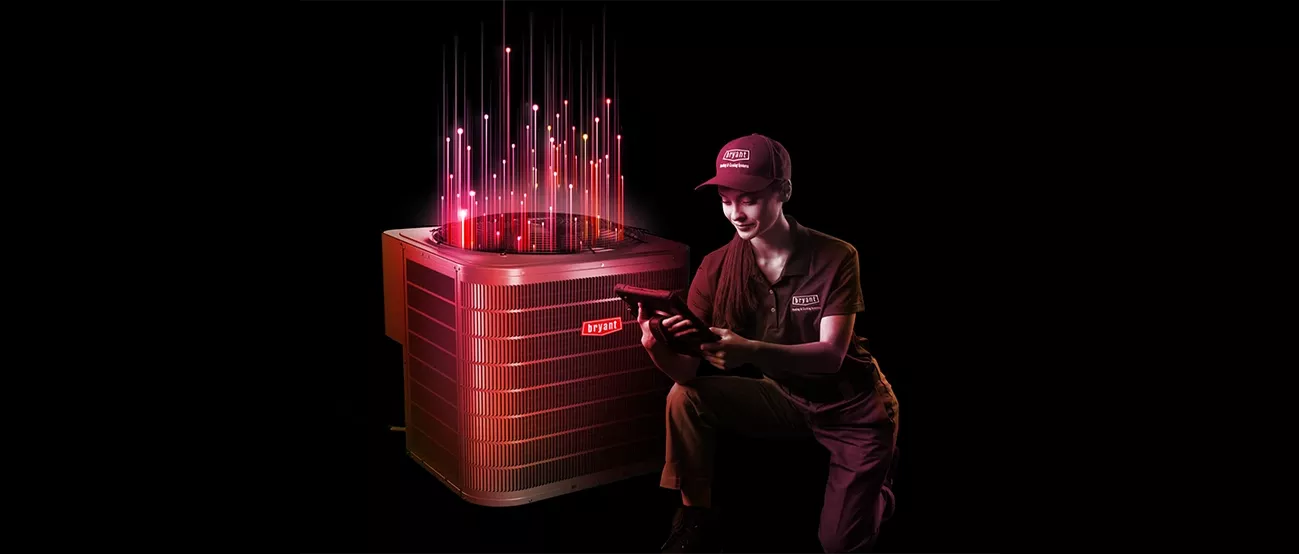
✅ Verdict: Carrier ties zoning, IAQ, and scheduling into a polished, unified control experience, while Bryant mirrors the depth with a simple, intuitive thermostat feel that many homeowners learn quickly.
Noise Level
🟦 Carrier: At low capacity, the variable-speed condenser and electronically commutated blower settle into a low, even sound profile, which most yards absorb easily. Outdoor loudness is measured in dB (decibels, a logarithmic unit of sound level), and the practical trick is to keep the equipment operating at partial load for most of the day so fan and compressor speeds stay modest. Indoors, gentle ramp-up keeps return and supply ducts from whistling, which is more about external static pressure (the airflow resistance of the duct system, measured in inches of water column) than the cabinet itself. With a flat pad, a short flexible section on the line set to decouple vibration, and reasonable clearance from reflective walls, the sound character remains soft and non-tonal during routine cooling.
🟪 Bryant: The Evolution stack behaves similarly because the control strategy favors long, low-power cycles that avoid full-speed surges. Outdoor cabinets are well braced, so panels do not chatter in gusty weather, and fan blade geometry reduces the higher-pitch notes that carry across fences. Indoors, a variable-speed blower ramps to the target cfm instead of jumping to it, which avoids pressure pulses in older trunks. As with any premium system, the quietest installs are the ones with sized returns, sealed filter racks, and supply registers that are not starved by furniture.
✅ Verdict: Carrier systems idle very quietly at low compressor speeds when sized correctly, while Bryant keeps the overall sound signature controlled with cabinet and fan profiles that stay composed in real rooms.
Cost & Affordability
🟦 Carrier: Premium variable-speed gear sits in premium installed-price territory. Typical installed ranges for a 3-ton reference job with standard labor and no duct replacement are: AC only Infinity 26 with matched coil about 12,000 to 20,000 USD, furnace only Infinity 98 about 6,000 to 10,000 USD, heat pump only Infinity 24 about 13,000 to 22,000 USD. A matched AC plus furnace set typically lands around 16,000 to 30,000 USD, and a dual-fuel configuration that pairs the heat pump with the modulating furnace often runs 18,000 to 34,000 USD. Regional labor rates, electrical upgrades, crane lifts, and line-set reroutes can add 10 to 25 percent, while off-season promotions and utility rebates can trim the invoice.
🟪 Bryant: Installed pricing trends similarly but often quotes a notch lower for comparable Evolution configurations. As a 3-ton reference, common ranges are: AC only 191VAN with matched coil about 11,000 to 18,500 USD, furnace only 987M about 5,500 to 9,500 USD, heat pump only 288BNV about 12,000 to 20,500 USD. A matched AC plus furnace package typically posts 15,000 to 28,000 USD, while dual-fuel setups tend to run 17,000 to 32,000 USD. The spread in quotes usually comes from accessories like zoning and IAQ, correction of high static by adding returns, and regional dealer programs.
✅ Verdict: Carrier systems idle very quietly at low compressor speeds when sized correctly, while Bryant keeps the overall sound signature controlled with cabinet and fan profiles that stay composed in real rooms.
Reliability & Durability
🟦 Carrier: Cabinets use powder-coated, corrosion-resistant steel, and all-aluminum indoor coils help reduce formicary corrosion (microscopic copper pitting driven by household organics). Inverter control avoids hard starts that stress compressors, and the communicating thermostat logs faults so intermittent issues are traceable rather than guesswork. Real longevity still depends on fundamentals: precise refrigerant charge verified by superheat and subcool (temperature differences that confirm the refrigerant is boiling and condensing where it should), airflow near 350 to 400 cfm per ton, and clean coils. With commissioning done by the book and annual maintenance, 12 to 15 years of low-drama operation is a realistic expectation.
🟪 Bryant: Construction and coil materials are equally robust at the Evolution tier, and the control strategy keeps operation in the low-stress zone for most of the day. Dealers familiar with the platform tend to verify charge digitally and check blower watts against target airflow to catch duct restrictions early, which reduces nuisance trips during heat waves. Where installs include coastal kits, hail guards, or washable filter racks, cabinets and coils stay cleaner and drain better, which prevents long-term capacity loss.
✅ Verdict: Carrier offers wide parts availability and dealer training that keeps repairs predictable, while Bryant shares the same engineering and is favored by independents who emphasize careful commissioning for longevity.
Cooling Performance
🟦 Carrier: The evaporator coil is held just cold enough to absorb both sensible load (temperature change) and latent load (moisture removal) efficiently, and the communicating control will bias blower cfm when indoor RH (relative humidity) climbs so the coil stays colder for longer. The result is long cycles, stable supply-air temperature, and humidity often stabilized around the mid-40s to near-50 percent in typical summers without overcooling rooms. Because daily operation lives at partial capacity, low-end turndown matters more than peak tonnage, and this platform’s staging keeps distant rooms from drifting warm during long afternoons.
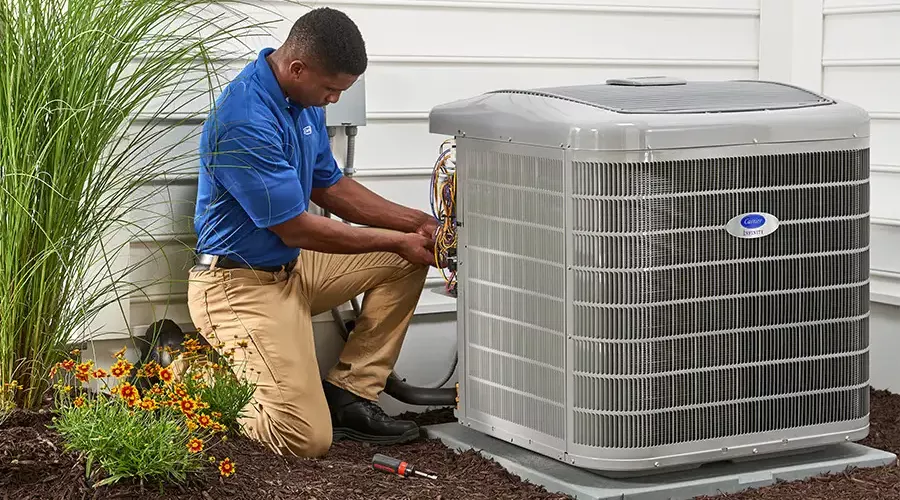
🟪 Bryant: The Evolution 191VAN and 288BNV pair with indoor coils to maintain predictable return-to-supply temperature splits while peeling off latent moisture at modest fan speeds. Longer runtimes on low power let distant branches of the duct system receive more continuous air, which evens out the temperature without dropping the thermostat further. In practice, households describe the air as “cool but never clammy,” which is exactly what careful modulation is supposed to deliver during humid stretches.

✅ Verdict: Carrier inverter systems excel at steady temperature and tight humidity control when paired with the right air handler, while Bryant inverters deliver the same comfort profile and are often tuned to balance dehumidification with airflow in older ductwork.
Heating Performance
🟦 Carrier: The Infinity 98 modulating furnace trims fuel in tiny steps with a variable-speed ECM blower (electronically commutated motor that can adjust speed precisely), so supply air warms gradually and rooms avoid the blast-then-coast pattern of older gear. The Infinity 24 heat pump uses an inverter compressor to hold output just above the load, which raises HSPF2 performance (seasonal heat efficiency for heat pumps) because long, low-power cycles minimize waste. In dual-fuel setups, the control hands off to gas at a user-defined balance point (the outdoor temperature where gas becomes cheaper or more comfortable than electric), keeping bills and comfort predictable in cold snaps. In practice, that means steady supply-air temperature, fewer defrost interruptions, and useful outdoor capacity into the mid 20s °F before gas is needed.
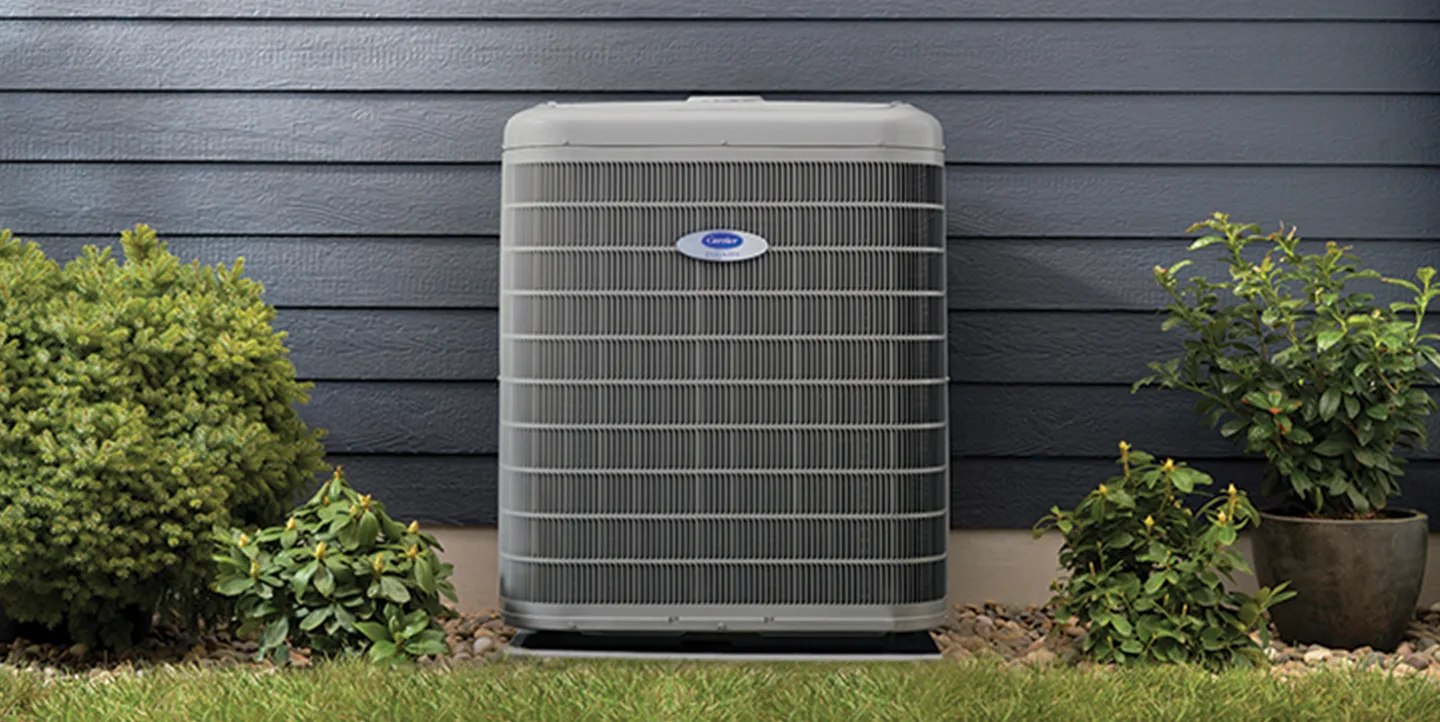
🟪 Bryant: The Evolution 987M modulating furnace and Evolution 288BNV variable-speed heat pump follow the same premium philosophy, coordinating burner modulation, blower speed, and compressor output through the communicating control so rooms warm evenly without noticeable swings. Defrost logic limits unnecessary reversals, and low-stage heat holds a stable supply temperature through most winter hours. In dual-fuel configurations, the balance point can be tuned to local energy rates, so electric carries shoulder seasons while gas covers deep cold. Owners typically report quiet operation on low fire and reliable electric heat into the high 20s °F before auxiliary sources are required.
✅ Verdict: Carrier gas furnaces modulate finely for smooth supply-air temperatures on cold days, while Bryant furnaces and variable heat pumps track the same staging logic and emphasize stable, even heat.
Indoor Air-Quality Enhancements
🟦 Carrier: The communicating ecosystem ties filtration, humidity, and ventilation into one plan. High-MERV media cabinets are supported out of the box (MERV is a filter rating that indicates how small a particle the filter can capture), and the control can run a dehumidify-on-demand profile by lowering cfm per ton when indoor RH climbs (cfm per ton is target airflow per ton of cooling capacity, RH is relative humidity). Whole-home humidifiers and ventilators, including ERV/HRV options (ERV/HRV are energy or heat recovery ventilators that bring in fresh air while exchanging heat or moisture), are orchestrated so airflow, coil temperature, and fan speed do not work against each other. The net effect is steadier 45-50 percent indoor humidity in summer and fewer dry-air complaints in winter.

🟪 Bryant: The Evolution Connex platform coordinates media filtration, UV or electronic air cleaners, humidification, and balanced ventilation with profiles that keep duct external static pressure within blower targets (external static pressure is the resistance the blower must push against, measured in inches of water column). The control can bias fan speed to increase contact time across filters and keep the coil cool enough to pull moisture when needed, reducing that cool-but-clammy feel. Because IAQ devices are treated as matched accessories, diagnostics remain intact after upgrades, which helps dealers maintain performance over time.
✅ Verdict: Carrier integrates filtration, ventilation, and humidification cleanly within its control ecosystem, while Bryant offers the same accessory set and is frequently chosen for flexible high-MERV cabinets at a friendlier system price.
Installation & Serviceability
🟦 Carrier: Premium outcomes depend on doing the fundamentals by the book. Best practice is Manual J for room-by-room load, Manual S for equipment selection, and Manual D for duct design and sizing. Commissioning targets include 350-400 cfm per ton, total external static pressure at or below equipment ratings, nitrogen pressure testing, deep evacuation to confirm moisture removal, and charge verification with superheat and subcool readings (superheat and subcool confirm the refrigerant is boiling and condensing in the right places). The communicating control’s logs surface faults and operating trends, so technicians can validate delta-T across the coil (delta-T is the temperature difference between return and supply air) without guesswork. Large access panels and clear wiring diagrams make routine service fast.
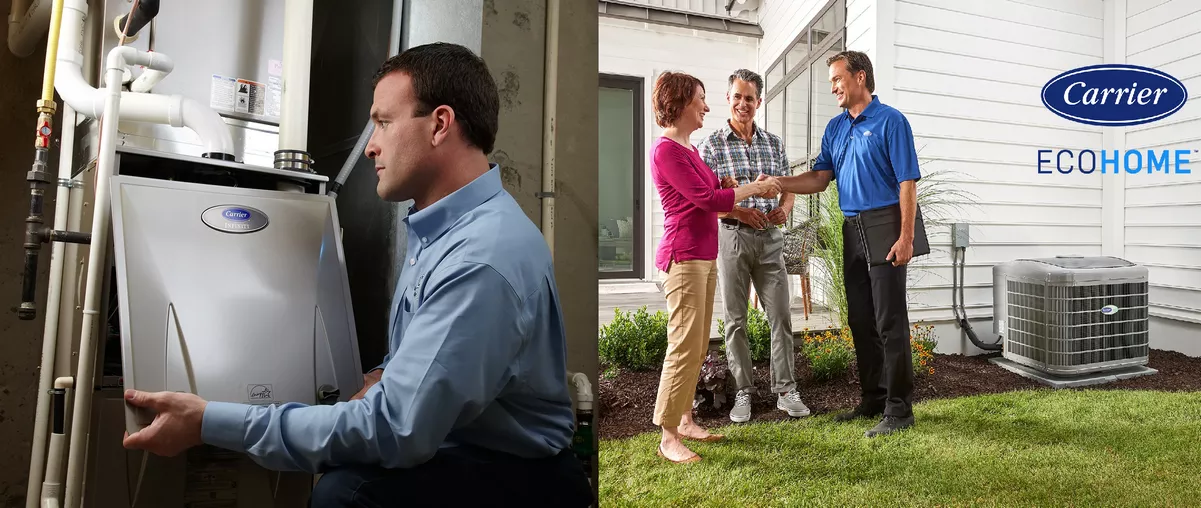
🟪 Bryant: The same discipline applies: load, selection, and duct design must come first, followed by airflow verification and precise charging. The Connex interface exposes blower watts, coil conditions, and fault histories that speed diagnostics, and cabinets provide direct access to coils, boards, and blowers for cleaning or replacement. Attention to return sizing and sealed filter racks keeps external static pressure in range, which protects motors and preserves comfort at low speeds. With proper commissioning and yearly cleanings, long, quiet runtimes and stable temperatures are the rule rather than the exception.
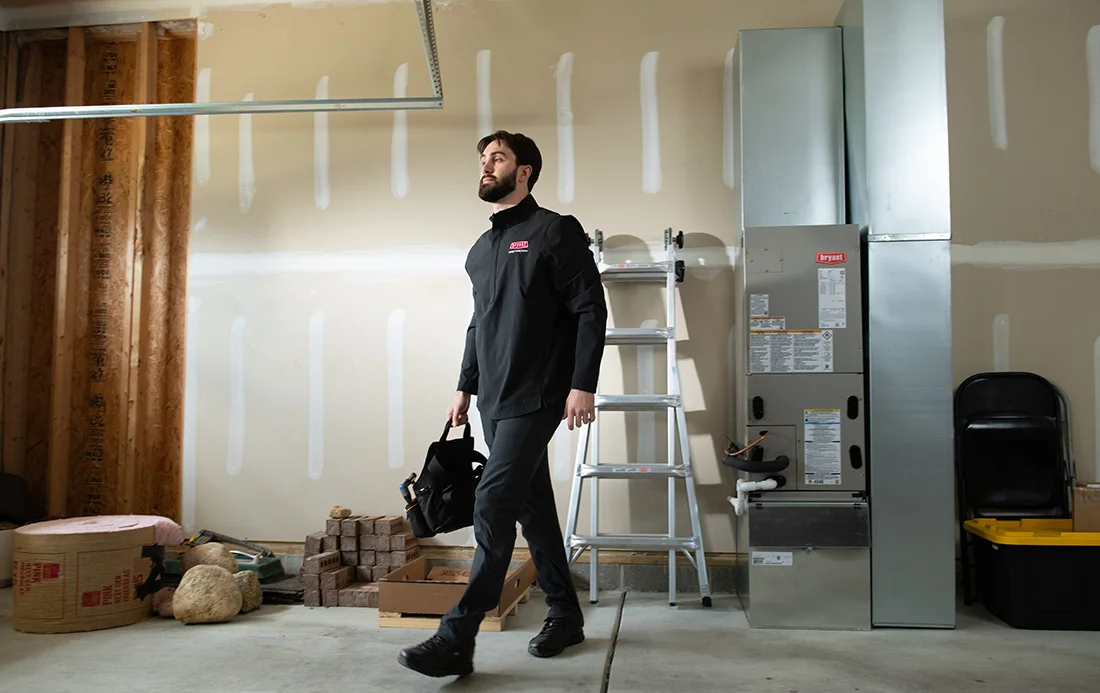
✅ Verdict: Carrier equipment provides clear diagnostics and is widely supported by dealers trained on Manual J/S/D best practices, while Bryant matches service access and is popular with contractors who want identical internals with a bit more pricing latitude for the homeowner.
Quick Buyer Match Guide
🟦🟦 Choose Carrier if you
You want the most consumer-friendly ladder of options, plan to run a fully communicating matched set with tightly coordinated IAQ, and care about squeezing the highest published AC efficiency ratings for rebate tiers while getting ultra-fine furnace modulation.
🟪🟪 Choose Bryant if you
You want a flagship Evolution stack that is often priced a notch lower like for like, prefer a communicating control that is straightforward for households to use, and value strong humidity control and diagnostics with dealers who know the platform well.
Conclusion
Both stacks represent the premium end of residential ducted HVAC, with true variable-capacity comfort, quiet operation, and mature smart controls. The first leans into top-tier AC efficiency, tightly integrated IAQ, and exceptionally granular furnace modulation. The second mirrors the comfort experience closely, often lands slightly better on installed price, and keeps everyday operation simple and stable. If headline efficiency and one-roof orchestration are priorities, the first is sensible. If premium comfort with friendlier pricing is the goal, the second is an excellent answer. In either case, the best choice is the one paired with a contractor who will size, duct, charge, and commission exactly to spec.

